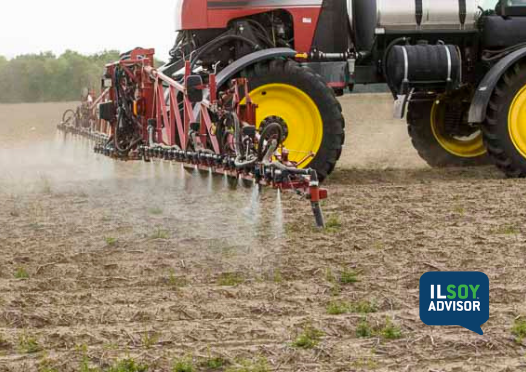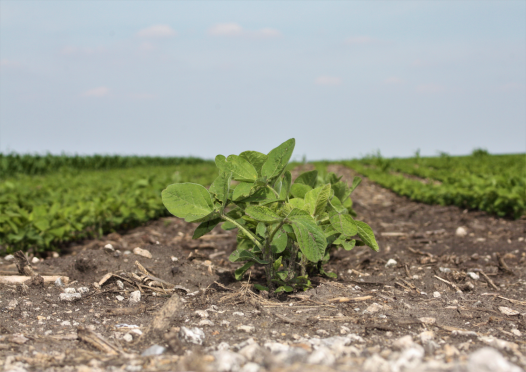ILSOYADVISOR POST
Weed Management: Managing Weed Research
When I teach a unit on pesticide resistance to the Integrated Pest Management class at Western Illinois University, I run through a series of comparisons with the students and I ask the question, “Which would you prefer?”
1) A weed management program with residual herbicides (and potential carryover) vs. no herbicide residues in the soil?
2) A weed management program with herbicides that consistently cause crop injury vs. no crop response from the herbicide?
3) A herbicide program where control is good (90% or better) vs. a herbicide program where control is excellent (usually 99%)?
4) A herbicide program where the cost is usually $30/acre or more vs. a program (at its least expensive cost) where weeds could be managed for less than $20/acre.
The students always choose the latter option of each comparison. I then explain that these were the choices presented to farmers with the introduction of Roundup Ready soybeans in the late 1990s, and the vast majority of farmers made the choice they did—a glyphosate herbicide-based soybean cropping system.
Glyphosate-resistant soybeans simplified both weed management and crop management. They made it easier to use and be successful with no-till, which allowed some farmers to increase the number of acres they farmed without adding labor. It made weed control more flexible: no longer were they tied to the use of a pre-emergence herbicide, but they could get all their acres planted first and then apply herbicides. It virtually eliminated “walking beans” and fields were still virtually weed free at planting.
In short, farmers made a rational and reasonable choice based on economics and cropping management flexibility based on the information they had 15 years ago.
But it turned out to NOT be a rational nor a reasonable choice based in weed biology and their ability to take advantage of an opportunity. Applying the same herbicide an average of two times per year to more than 70 million acres across the U.S. was massive selection pressure. It was inevitable that a few individuals of the hundreds of billions of weeds treated each year with glyphosate would carry a mutation that would allow them to survive the glyphosate application—and to then pass that gene to their offspring.
The result in 2014 for many fields in Illinois was marestail, waterhemp and/or Palmer amaranth plants that shrugged off multiple applications of glyphosate and stole potential yield from the soybean crop.
Agronomists and farmers have responded the past five years by increasing the percentage of soybean acres that receive preplant or pre-emergence applications of residual herbicides, and many acres also receive two or more herbicides for postemergence weed control.
Once again I believe we are making rational choices based on economics and cropping management flexibility—at the expense of forgetting that soybean production is primarily a biological activity. Relying on “herbicide-only” weed management systems will keep us on a pesticide treadmill that is rapidly becoming shorter and allowing less room for error.
As you prepare for the 2015 cropping system, please consider the biology of the weeds in your soybean fields. How can you use the tools at your disposal—equipment sanitation, seed selection, tillage, planting dates, row spacing, cover crops, new rotational crops and a diverse portfolio of herbicides—to eliminate weed seed production in your fields and protect your crop from weed competition. Make reasonable and rational choices based on the biology of your fields and the long-term sustainability of your operation, and don’t rely just on herbicides for control. You will be fighting a losing battle.

Mark Bernards is an Assistant Professor in the School of Agriculture at Western Illinois University (WIU). He earned his Ph.D. at Michigan State University, and M.S. and B.S. degrees at Brigham Young University. At WIU he teaches several classes, including Principles of Crop Science (AGRN 176), Integrated Pest Management (AGRN 373), Weed Science (AGRN 479), Diseases of Economic Plants (AGRN 374) and Field Crops of the Midwest (AGRN 377). He advises the Agronomy Club and coaches the WIU Weed Science Team. Mark directs agronomy operations at WIU’s Agricultural Field Laboratory where he conducts research on weed management in corn and soybean and evaluates herbicides and adjuvants for crop safety and weed control efficacy. Prior to joining WIU, Mark worked as an Extension Weed Specialist for the University of Nebraska-Lincoln.




Comments
Add new comment